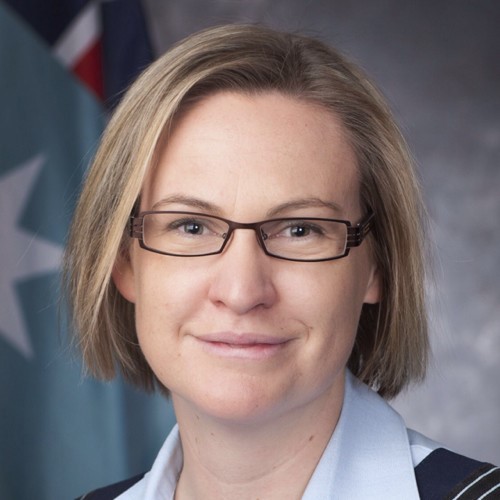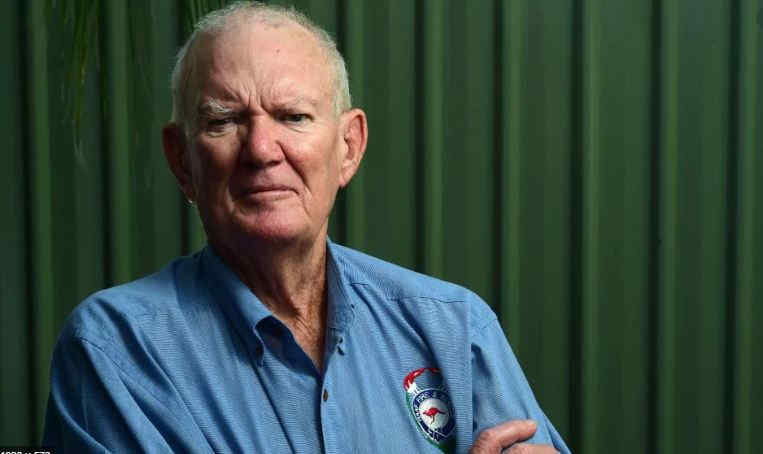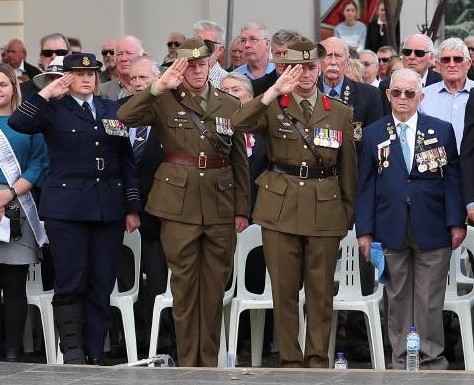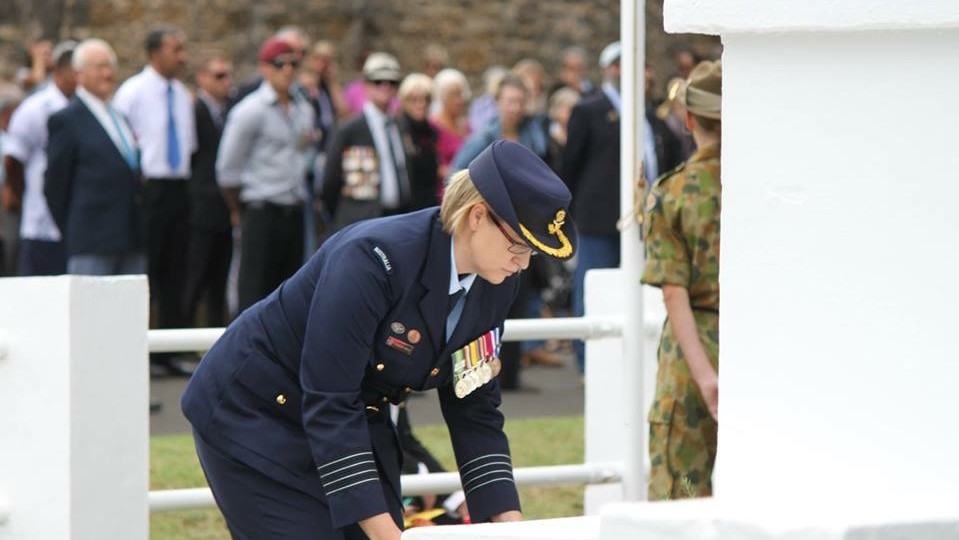|
|
||
|
||
|
Privacy Policy | Editorial Policy | Profit Policy | Join the Association | List of Members | Contact us | Index | Links |
||
|
Back Go to page: 1 2 3 4 5 6 7 8 9 10 11 12 13 14 15 16 17 18 19 20 Forward
|
||
|
My Story.
|
||
|
|
||
|
Contents.
|
||
|
|
||
|
My first 10years in Air Force (described in the last edition) were filled with amazing opportunities.
But in 2006 I posted to Canberra and was immediately struck down with depression. After several years of travelling constantly for work I came to believe I was the worst mother in the world. My four year old would follow me to take the bin out to the road on garbage day, just to make sure I was coming back. And unfortunately, this message, that I was a poor mother because my Air Force career took me away from home, was also passed to me by a number of “well-meaning” others outside of Air Force.
It was like I was at the crossroad of a generational expectation of mothers. I had been brought up to be told I could have it all – family and career - and was adjusting to the realisation that “all” was possible, but probably not at the same time. I was struggling with identity, with what it meant to be an Air Force Officer and a parent of two children. Despite my best intentions, I was jealous of male colleagues who could work long hours and go home to their wife who had organised everything; while I went home to help with homework, clean up and cook dinner. I found myself pregnant with my third and decided it was perhaps time to take stock and a year off to be away from work.
That year away was exactly what I needed. Time to be a mum all day, walk the kids to school and work out how this modern concept of the working mum would actually be achieved. At the end of the year I was selected for an exchange posting to Washington DC, in operations and international law at the Pentagon. And I was ready to be back.
Now the Pentagon is not as glamorous as it sounds; essentially it is a 1950s office building, but I was so appreciative of the opportunity to work with such a large Air Force – with 1500 lawyers compared to our 40. They had low expectations for my work and it was very satisfactory to show that we Australians could absolutely hold our own with our US colleagues. My most memorable work was on the closure of the Guantanamo Bay detention facility and on the legal ways to cut off the funding to terrorism via the opium trade.
I arrived back in Australia in 2010, when the military justice system was in crisis. The High Court had decided that the Australian Military Court was unconstitutional. I worked for 12mths on a proposal for a replacement criminal court that would be constitutional; but, as happens in Canberra, there was an election and it was not to be. Instead I moved on to work towards a set of national ethical rules for ADF lawyers as well as a new pay scale that recognised both generalist lawyers and those with specific expertise.
In 2012 I was selected to work in Air Force Headquarters as the legal advisor to the Chief and Deputy Chief of Air Force. This was a really interesting role. It was at this time that I became aware of the work of Pat Mildren (right) and the RAAF Firefighters Association and their fight for recognition of the conditions under which they worked in the 1950s - 1980s (see HERE). I spent a lot of hours researching veterans benefits and the difficulties associated with conducting health studies of small groups.
I travelled to Afghanistan for a month for some specialist work, ensuring that our detention centre was compliant with International Humanitarian Law and that workplace accidents were properly investigated. I travelled to Tarin Kowt, Khandahar and Kabul. There I worked with a local translator who had just become a father to a baby girl. He explained to me that his wife was illiterate, but his hope from all of this was that his daughter would be given the opportunity to go to school.
For me the years I spent in Air Force Headquarters were the best of my career to date. I worked with an amazing team of people who were absolutely focused on achieving the best for Air Force. And we had a lot of fun. One enduring memory was the bemused look of CAF, AIRMSHL Leo Davies, when we were contacted by a lady from an Eastern European country who was convinced she had been conversing with him on social media and was going to marry him?? Sure enough, on investigation, someone had stolen his image and set up a fake account to rip off this poor lady.
At the other extreme, during this period Defence was embarking on a restorative engagement program. This was an opportunity for senior Defence personnel to meet with victims of historical abuse in the ADF, hear their experience and apologise on behalf of the Air Force. I took part in four restorative engagements with former Air Force members who were victims of terrible abuse, and they were each difficult and emotional experiences.
In 2017 I was appointed to Command, as the Commandant RAAF College at RAAF Base Wagga. While Command is a special experience for everyone, I was especially proud and grateful as I was the first legal officer ever given this opportunity. It is also not too common for the senior officer to be female and at my first few events with the Wagga Wagga RSL I was the source of some confusion. I was mortified when one wife turned to her elderly veteran husband with the comment: “Look she has more medals than you!” |
||
|
|
||
|
To be completely honest I was a bit concerned about being accepted. But I shouldn’t have been, the relationship between the RAAF and the Wagga community is strong. My most proud moment was when I was given the opportunity to review the Wagga 2017 ANZAC Day Parade, and standing on that podium, saluting all our veterans was humbling and something I will never forget.
I now work at the Inspector General Australian Defence Force as the Director of Inquiries and Investigations. We are the place people go when they feel no one else has been able to resolve their issue. I continue to love that I am given the responsibility to make a difference.
I do not know if there will be a part 3 to my story, such is the unknown aspect of senior Air Force postings. But I feel very privileged for the opportunities I have been given, the friends I have made and the culture that is the Air Force in 2019. We each have our own paths in this service, but I think the central pillar is the same for us all: that combination of comradery and task focus that makes us proud to serve.
|
||
|
|
||
|
|
||
|
I changed my iPod's name to Titanic. It's syncing now. |
||
|
|
||
|
RAF pilot Frank Dell's story of survival in Nazi occupied Holland
As a teenager, Frank saw the Battle of Britain played out in the skies above his village in the south of England. He joined the RAF and piloted a De Havilland Mosquito on bombing raids into Germany.
Frank Dell's experience as a Second World War pilot with the Royal Air Force's Light Night Striking Force takes an even more dramatic turn when his Mosquito is shot down over Germany on the night of 14/15 October 1944. In 'Mosquito Down!' Frank recounts his escape from the disintegrating aircraft, his descent by parachute, and how, battered and bruised, he finds himself in a field adjacent to a German V2 rocket launch pad. Determined to avoid capture Frank crosses Nazi Germany and finds refuge in Holland with a Dutch Resistance group. A schoolboy when the conflict broke out, Frank Dell's extraordinary war takes him from a Home Guard unit defending the English coast against enemy invasion in 1940, to a tragic incident leading to the execution of Dutch civilians only weeks before the end of the hostilities. Frank's observant eye gives insight into what it is like to train and fly operationally with the RAF, and then there are the even greater challenges he experiences as he narrowly escapes capture while on the run from the Germans. A throughly compelling narrative
He emerges from his traumatic experiences with heightened respect for the courageous Dutch families who risked death to shelter him and other Allied airmen. After the war he flew for BEA in Cyprus before returning to the UK in 1954, where he flew Viscounts, Vanguards and Tridents, retiring in 1976 as British Airway's Chief Pilot (Technical). After retirement Frank served as a member of the Board of the Civil Aviation Authority and held the post of Master of the Guild of Air Pilots and Air Navigators in London. Frank and his wife now live in Sydney, Australia.
In November 2014 he was interviewed by Richard Fidler in one of his (Richard’s) excellent “Conversations” program. You can hear that interview HERE.
Frank has written a book of his war time experiences, the book is titled Mosquito Down. You can get a copy HERE
|
||
|
The Royal Aeronautical Society (RAeS) lecture by Concorde pilot John Hutchinson late in September was fascinating and astonishing. He presented clear evidence that the French authorities, who conducted the crash investigation, covered up the true cause and tried to blame Continental airways engineers and design weaknesses in Concorde. The truth is that Air France was totally to blame. Firstly their maintenance procedures were extremely poor.
During an undercarriage service a spacer, that kept the wheels tracking straight, was not replaced. The spacer was later found on the shelf in the maintenance hangar. The aircraft had done four flights with this defect prior to the crash so it wasn’t the prime cause, but as with all accidents there were a number of other errors that all added up.
This may have been another successful flight had the crew not of had such a cavalier attitude to flight safety. The first officer’s licence had expired making the flight illegal. This wasn’t a factor in the crash but demonstrates the unprofessional attitude in Air France.
The main fault lies with the Captain who overrode procedure and ordered the tanks to be filled to the brim instead of the normal 80%. He ordered more fuel than was required to be put in the aft tanks used for taxiing. He allowed 19 bags, that had not been weighed, to be loaded in the aft hold. All this made the aircraft over weight and the CofG out of limits.
Presumably due to the weight and balance being out of limits he requested to use the runway extension, even though it was officially out of use because it was being re-surfaced. He also elected to take off with an 8 kt tail wind. The French investigations verdict was that the crash was caused by a metal strap falling off a Continental airways DC10 onto the runway which burst a tyre, punctured the Concordes fuel tank starting a fire.
What really happened was that as the aircraft accelerated over the unprepared part of the runway it hit a ledge as it crossed onto the prepared surface at about 100kt. This caused the wheels to track to the left as they had no spacer to constrain them. The tyres overheated and burst starting the fire. The aircraft slewed off the runway to the left, hit a runway light and the metal strap which carved a piece of tyre off which was then thrown up into the wing tank setting up a shock wave. As the tank was full there was nowhere for it to go other than out through the top of the wing streaming fuel into the engine efflux. The engine overheated but wasn’t on fire and was still producing power.
The flight engineer ignored normal procedure and shut the engine down. As the aircraft was past V2 he should have allowed the aircraft to gain height before doing that. All this contributed to the aircraft crashing into a hotel killing all 109 on board and 4 people in the hotel. The death toll could have been a lot worse. As the Concorde was careering off the runway it missed a fully loaded 747 waiting for permission to cross, by just 20 feet.
On board that aircraft was the President of France and his wife. In addition to that a British youth orchestra had planned to stay in the hotel. Had it not been for their ferry being delayed they would have checked in and certainly perished as well. What makes the French authorities actions even worse was that they obstructed the UKs AAIB investigation, not allowing full and timely access to the crash site and certain evidence.
The French prosecuted the Continental Airways engineers for manslaughter and they unfairly blamed design weaknesses in Concorde. The engineers were later acquitted on appeal, and this is where much of the hidden evidence came to light. After the trial the French barrister, who successfully defended the engineers, was mysteriously found dead but the French didn’t hold an inquest into that.
A disgraceful chain of events that eventually led to Air France, who wanted to see Concorde grounded, putting pressure on Airbus, who were the design authority for Concorde, to increase their charges to British Airways. This was a deliberate act to make the aircraft too expensive to operate and resulted in an unjustifiable slur on the reputation of one of the greatest aircraft ever to fly.
You can see an interview with John Hutchinson below.
|
||
|
|
||
|
|
||
|
|
||
|
|







